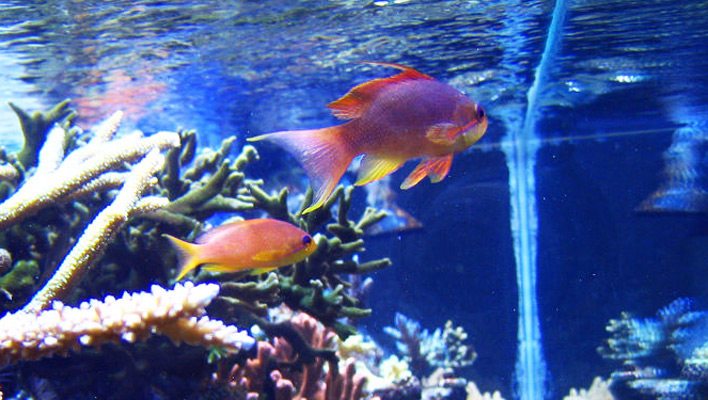The occasional loss of fish is an unavoidable reality of marine aquarium keeping. Fish have a finite lifespan, and some are destined to pass away in captivity, even when they’re provided the best possible environment and care. But more often than many hobbyists care to admit, specimens die not because their proverbial number was really up (after all, some species can live for decades in captivity), but because some vital aspect of their long-term husbandry needs was overlooked.
Chief among the causes of these avoidable deaths are nutritional deficiencies that cause fish to gradually starve—often over a period of many months or even several years—despite the fact that they’re apparently eating what’s offered. Because these deaths often seem to have no readily identifiable cause, they’re often dismissed as anomalous losses that are beyond the hobbyist’s control.
What causes these dietary deficiencies? Here are five common pitfalls to watch out for:
#1 Overemphasizing one food type
It’s easy to fall into the habit of providing just one food item much of the time because it’s convenient and/or all the fish in the tank will readily eat it. However, no single food can satisfy all the nutritional needs of any fish species. Be sure to offer a rich variety of foodstuffs so any nutritional gaps are filled. Even varying the brands of commercial foods offered can help stave off dietary deficiencies.
#2 Offering nutrient-poor foods
Keep in mind that even a varied diet can be deficient if all or most of the foods offered are nutrient-poor. To frame it in human context, one could argue that a diet consisting of chocolate cake, fast-food burgers and fries, flavored snack chips, and beer is varied. But nutritious? Not so much. Similarly, if everything you provide your fish is nutrient-poor, such as stale flake food, un-enriched frozen brine shrimp, and iceberg lettuce, you may be offering a variety of foods, but certainly not a nutritious variety.
#3 Inappropriate feeding frequency
Different fish species have very different needs with respect to feeding frequency that must be met. Many will do just fine with once-daily feedings, but some (e.g., planktivores, such as anthias) need multiple feedings spaced throughout the day and others (e.g., larger predators, such as moray eels and groupers) need to be fed only a few times per week.
#4 Over-generalized feeding
Another common misstep is offering a menu that satisfies the nutritional needs of the majority of specimens in the tank while shortchanging the needs of the minority. This commonly occurs when a tank is stocked primarily with easy-to-feed generalists but also contains a highly specialized feeder that usually won’t accept standard aquarium fare, such as the green mandarinfish (Synchiropus splendidus).
We can also include in this category the pitfall of offering a menu of mostly meaty food items to primarily herbivorous species, such as tangs and rabbitfishes, and vice versa.
#5 Sterile tank syndrome
Some fishes, including many of the dwarf angelfishes and butterflyfishes, naturally pick and graze all day long on organisms growing on the rocks and substrate. When kept in “sterile” systems that are not well established and/or lack adequate live rock aquascaping, these fishes are prone to dietary deficiencies and gradual starvation.



